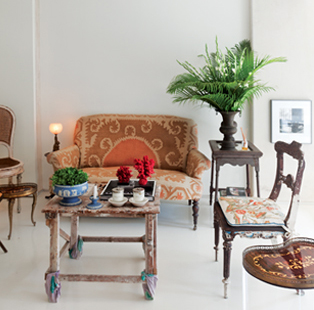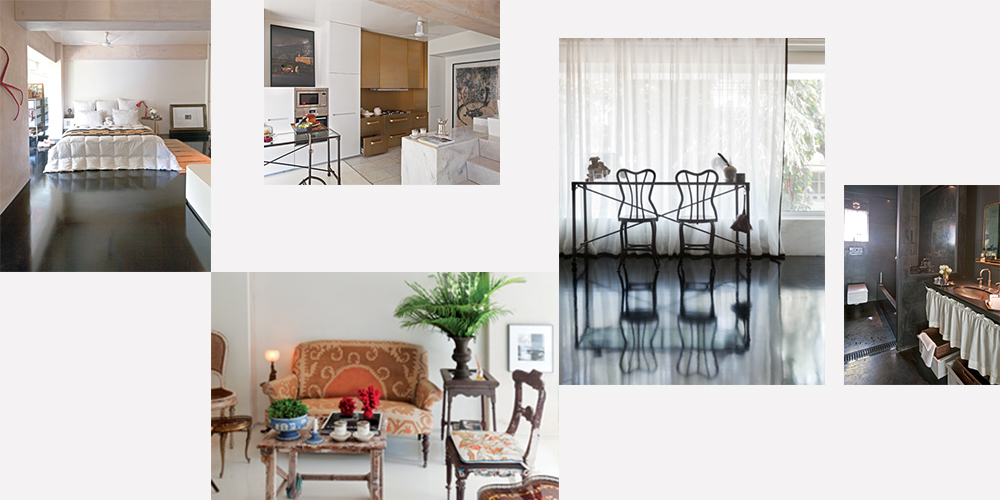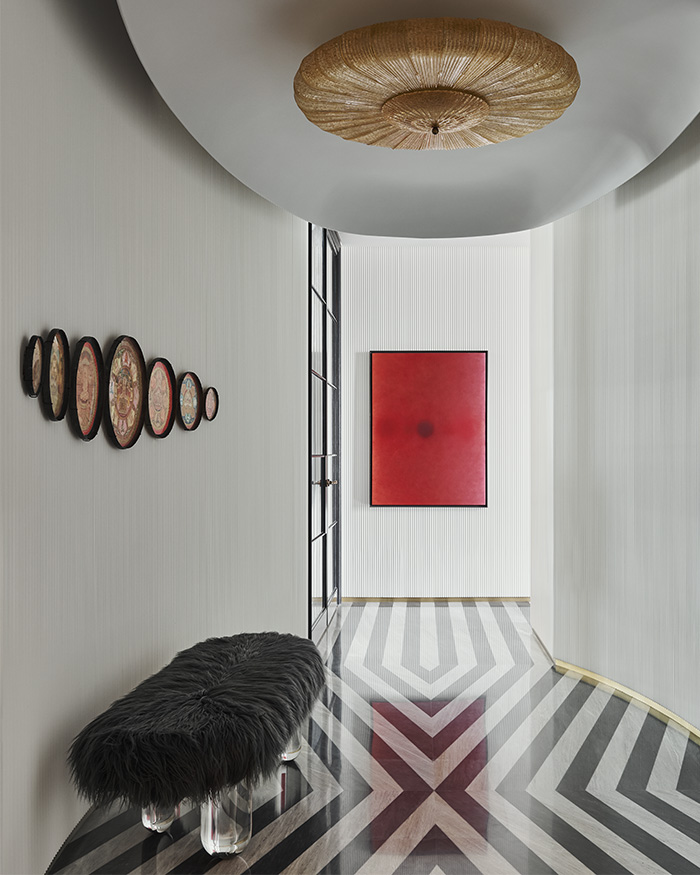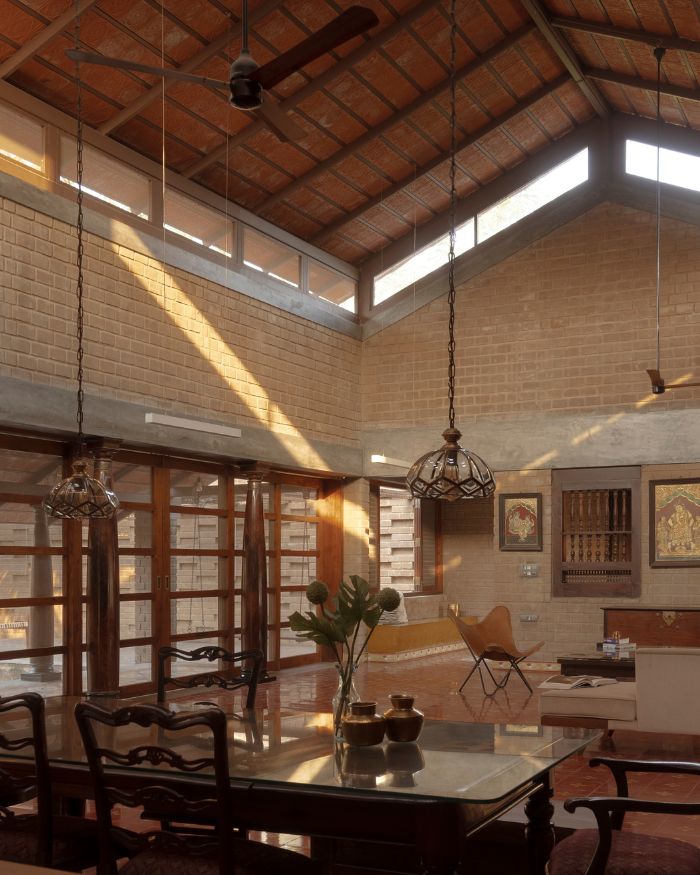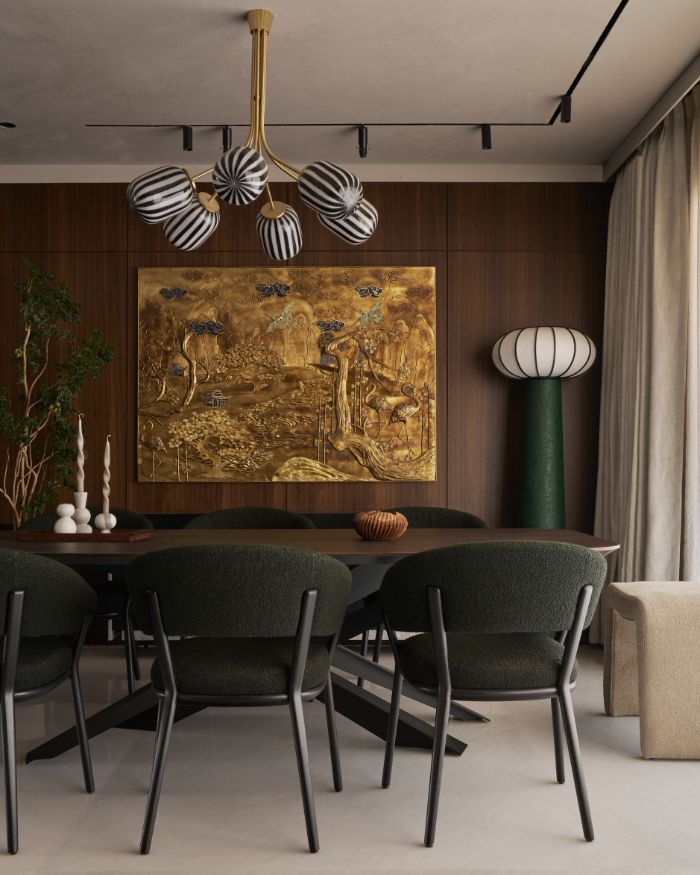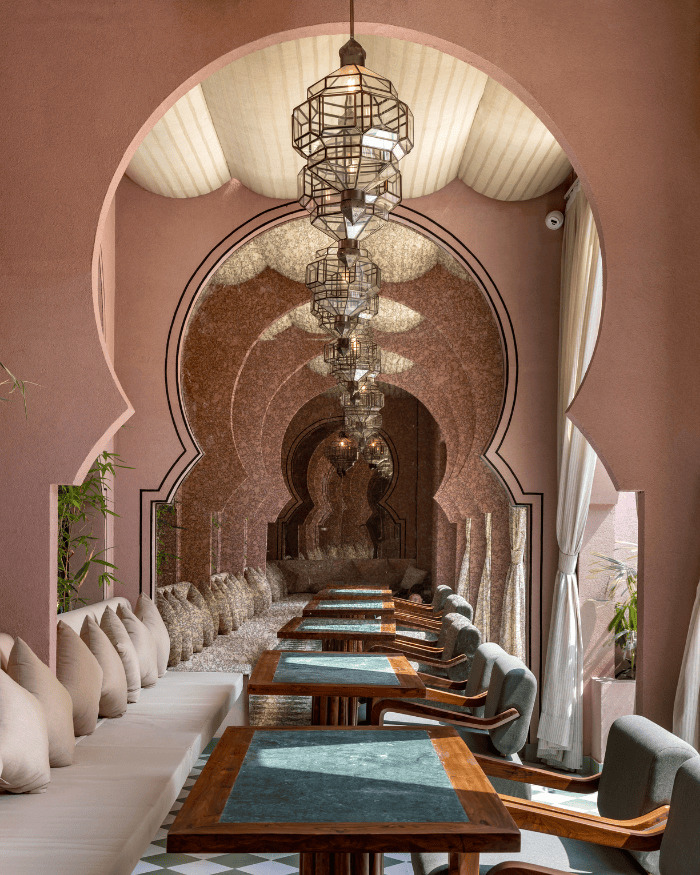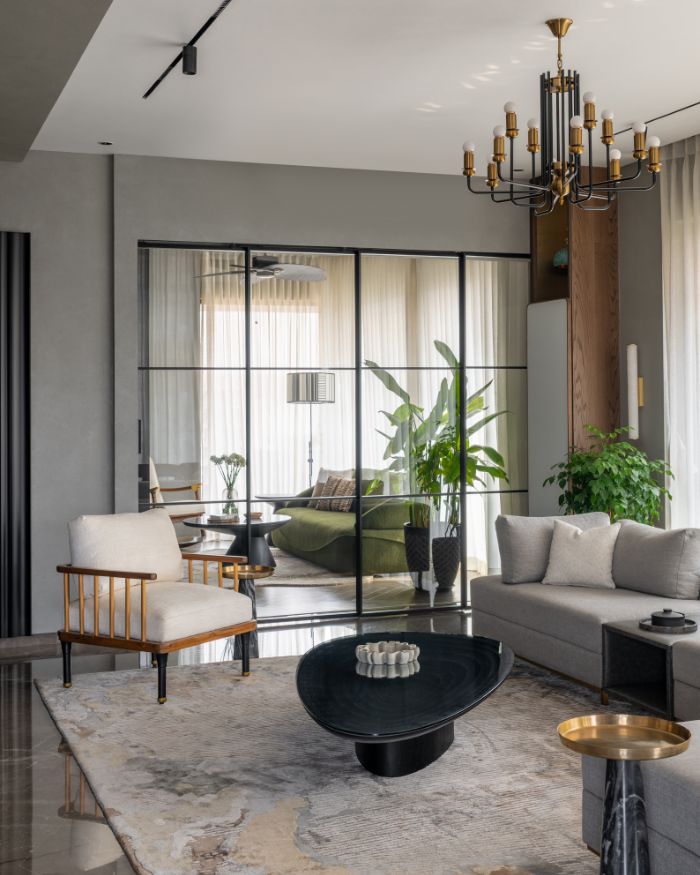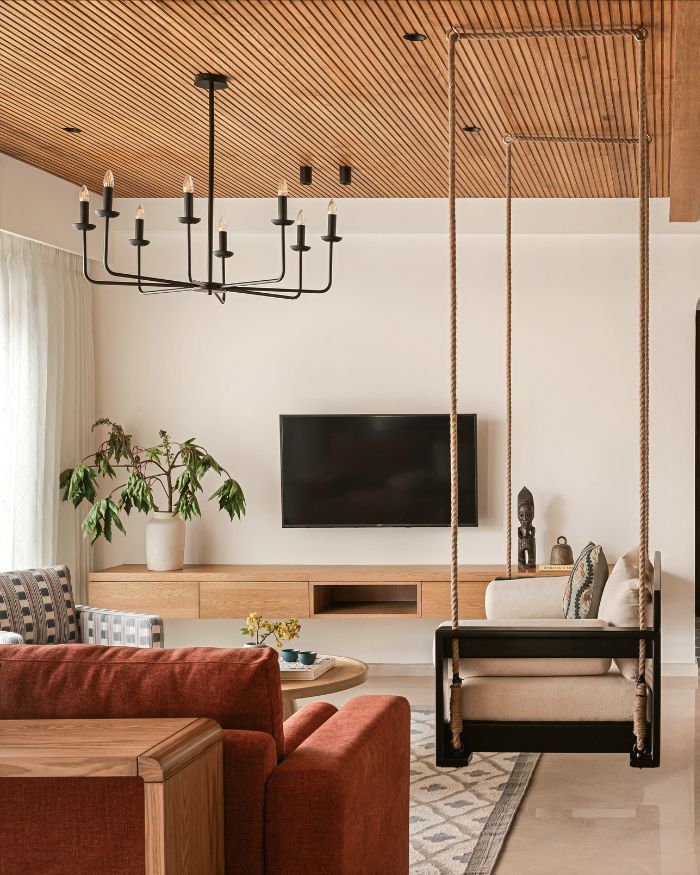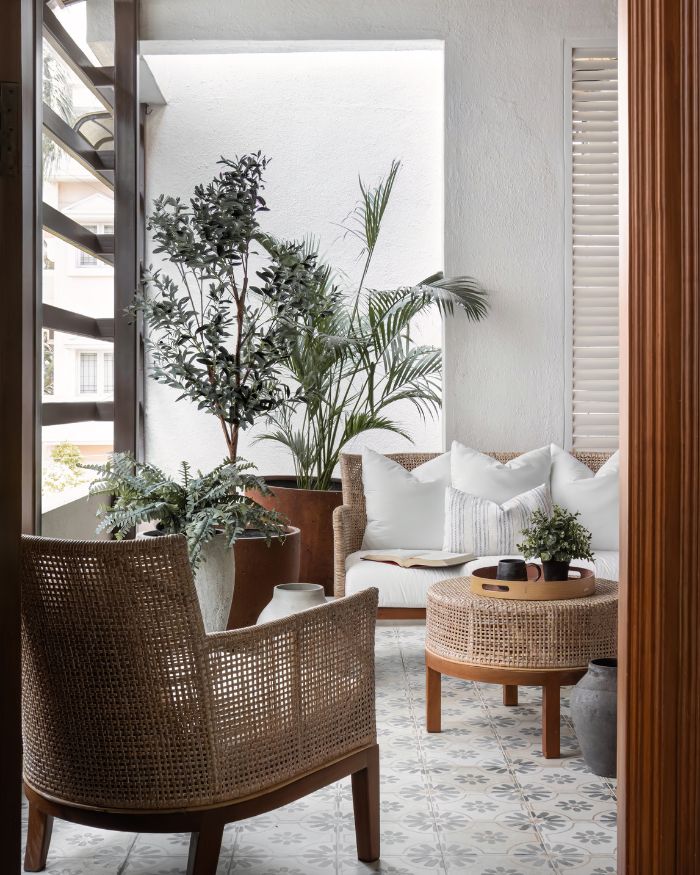Working for myself is the easiest job: I’m not demanding, I’m not indecisive, and I always agree with me. There are no expectations of time and aesthetics. I’m allowed to think freely and I’m not answerable to anyone. I personally don’t need to have a perfect space. What I do care about is light, art and textures. I think a designer’s home should have a raw quality – if the house is too polished, you’re cheating yourself. Sometimes it is not what you buy but the things you find that ultimately give you the most pleasure. I frequently pocket a rock or a piece of wood for its colour and composition. The secret to keeping your eyes open is to keep your life open to adventure. I love exploring the unexpected; turning an old leopard coat into a big sofa pillow, cutting up a serape from a trip to Mexico, an old sari or an intricately patterned Japanese obi…
Here are 6 strokes to help you create your own masterpiece.
1. Use colours that dissolve into the background. I find white to be the most interesting, it erases boundaries, expanding space. Walls disappear and you are left with what is most important – people and furnishings. The energy goes to the centre of the room.
2. Mirrors enlarge space and create mystery. Angling a large one on a blank wall is a great way to create visual maximisation.
3. I rarely pick printed fabrics as they define the area, visually reducing it, and distract you from the shape of furniture. Patterns isolate individual pieces whereas solids allow them to merge into the surroundings.
4. Cushions are a wonderful way to bring a blast of hues or motifs into a neutral room. Varying sizes generate interest.
5. Gather everyday objects over touristy souvenirs on your travels to get a quirky collection going. Display them together to make a stronger statement than dispersing them around a room. When you arrange things in different ways, you see them afresh.
6. My rule of thumb is to hang or rest pictures three inches above a table or sofa, but tweaking this rule and experimenting adds drama. Sometimes I prop them against the wall so they can be moved around easily.
Website: www.ashieshshah.com
SHARE THIS ARTICLE
Facebook
X
LinkedIn
WhatsApp
You May Also Like
Harrow International School in Bengaluru teaches eco-consciousness through its campus
Vaishali Kamdar and Komal Sanghavi Vasa unfurl Parisienne flair at a South Mumbai home
In Hosur, Studio XS creates a sustainable home by tracing the past
In Mumbai, a home by NZ Architects weaves stories of natural textiles and calm colours
Sorbo by Studiio Dangg reveals an old-worldly Moroccan setting into its architectural interiors
From totems to thresholds, Vcreate Designs crafts a cinematic dwelling layered in subtle spectacle
Indian aesthetics meet Californian openness in this Bengaluru home by Weespaces
ABM breathes new life into a Mumbai landmark, blending minimalism and memory
Nishita Kamdar makes the most of her 800 sq ft Mumbai residence
Meet a compact yet culture-driven Bengaluru home by Aakriti Saraf Designs
Watch
No results found.
Play Video
After Hours with chef Rahul Akerkar
A slow adventure of flavours and memories at Ode in Mumbai
Play Video
After Hours with chef Amninder Sandhu
An evening at Palaash, a restaurant inside Tipai Wildlife Luxuries
Play Video
Before and After: A Bengaluru home
Vinita Chaitanya's newest home transformation is one for the books
Play Video
Masoom Minawala’s Dubai home
Poised, confident, dynamic. Her residence is as spirited as her
Play Video
Candid with Tej Chauhan
He tells all about his collaboration with Rado for the DiaStar
Play Video
This AI Cafe exists in real life
In Faridabad, MOFA Studio calls this experiment Cafe Delhi Heights
Candid with Aamir and Hameeda Sharma
Stylish and suave, the couple and their home in Hyderabad
Oorjaa’s new exhibition at 47A
Untamed and alive, nature takes over Kotachi Wadi in Mumbai
Play Video
Candid with George Seemon and Alicia D’Souza
The architect and illustrator make for great company on a rainy afternoon
Candid with Jannat and Shehzad Vasi
Would you let your sibling design your home? This playful duo says yes

